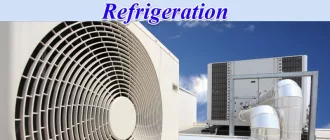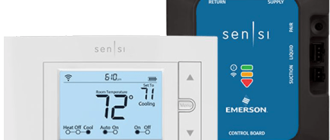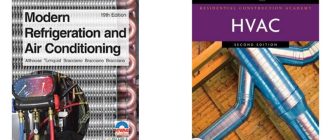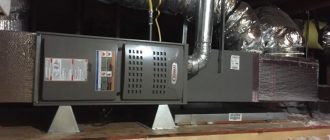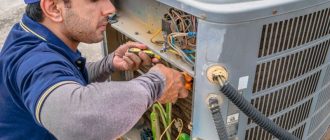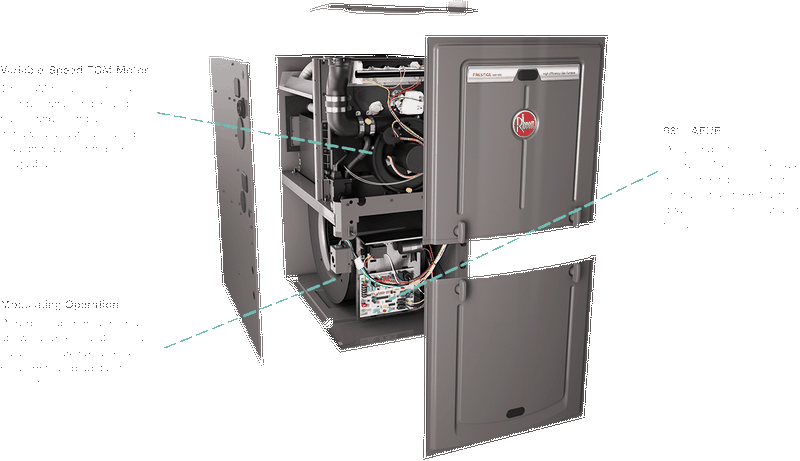
Navigating Gas Furnace Features: A Comprehensive Comparison Guide
When it comes to home heating, gas furnaces are a popular choice due to their efficiency, reliability, and cost-effectiveness. However, with so many different furnace models and features to choose from, navigating the market can be overwhelming. That’s why we’ve created this comprehensive comparison guide to help you make an informed decision about which gas furnace is right for your home.
In this guide, we will compare the various features that you should consider when purchasing a gas furnace. From energy efficiency ratings and heating capacity to noise levels and warranty coverage, we will break down each feature to help you understand its importance and how it can impact your overall comfort and satisfaction.
One of the key features we will focus on is the energy efficiency rating of gas furnaces. With rising energy costs, it’s important to choose a furnace that can help you save on your utility bills. We will explain the different ratings, such as AFUE (Annual Fuel Utilization Efficiency), and how they correlate to energy savings.
We will also discuss the heating capacity of gas furnaces, which is measured in British Thermal Units (BTUs). Understanding the heating capacity of a furnace is crucial for ensuring that it can adequately heat your home without consuming excessive energy. We will provide guidance on how to determine the appropriate heating capacity for your specific needs.
“Choosing a gas furnace is an investment in your home’s comfort and energy efficiency. With the help of this comprehensive comparison guide, you will be equipped with the knowledge and understanding to make an informed decision. Whether you’re upgrading your existing furnace or purchasing a new one, this guide is your ultimate resource.”
Understanding Gas Furnace Efficiency Ratings
When it comes to selecting the right gas furnace for your home, understanding efficiency ratings is crucial. Efficiency ratings are a key factor in determining how well a furnace can convert fuel into heat, and ultimately, how much money you can save on your energy bills.
Gas furnace efficiency ratings are typically measured by two different metrics: Annual Fuel Utilization Efficiency (AFUE) and Seasonal Energy Efficiency Ratio (SEER). Each rating provides valuable information about a furnace’s energy efficiency, but they measure different aspects of performance.
The AFUE rating measures how efficiently a furnace converts fuel into heat over the course of an entire heating season. It is expressed as a percentage, with higher percentages indicating greater efficiency. For example, a furnace with an AFUE rating of 95% means that 95% of the fuel it consumes is converted into heat, while the remaining 5% is lost during combustion.
The SEER rating, on the other hand, measures the cooling efficiency of an air conditioning system or heat pump. It is calculated by dividing the total cooling output of a system by the total energy input. While SEER ratings are not directly applicable to gas furnaces, they are important to consider if you are also using an air conditioning system in conjunction with your furnace.
When comparing gas furnaces, it’s important to look for models with high AFUE ratings. The higher the AFUE rating, the more efficient the furnace will be, and the more money you can save on heating costs. However, it’s also important to note that higher efficiency models may come with a higher upfront cost.
In addition to AFUE and SEER ratings, there are other factors to consider when evaluating the efficiency of a gas furnace. These include features such as two-stage or modulating burners, variable speed motors, and zoning capabilities. These features can further enhance a furnace’s efficiency by allowing it to modulate its output based on the heating needs of your home.
In conclusion, understanding gas furnace efficiency ratings is essential when navigating the comprehensive comparison guide for gas furnaces. By considering factors such as AFUE and SEER ratings, as well as additional features, you can make an informed decision and find the right furnace for your home.
Comparing Single-Stage and Two-Stage Gas Furnaces
When it comes to choosing a gas furnace for your home, it’s important to understand the different options available to you. Two common types of gas furnaces are single-stage and two-stage furnaces. In this comprehensive comparison guide, we will explore the features and benefits of both types, helping you make an informed decision for your heating needs.
A single-stage gas furnace is a basic model that operates at a single fixed heating capacity. It works by turning on at full capacity whenever the thermostat signals a need for heat. This means that the furnace is either running at maximum output or completely off. While a single-stage furnace is typically more affordable upfront, it may lead to temperature fluctuations and higher energy bills due to its on-off cycling.
On the other hand, a two-stage gas furnace offers more flexibility and energy efficiency. This type of furnace has two heating stages: a low stage and a high stage. The low stage is designed for regular heating needs, providing consistent and gentle warmth. The high stage is activated when there is a greater demand for heat, such as during extremely cold weather or when the thermostat is set to a higher temperature. The two-stage furnace adjusts its heating capacity based on the desired temperature, allowing for more precise temperature control and improved energy efficiency.
One of the main advantages of a two-stage gas furnace is its ability to provide more even heating throughout your home. By running on the low stage most of the time, the furnace can maintain a steady temperature without constant starts and stops. This not only keeps your home more comfortable but also reduces noise and wear on the furnace. Additionally, the two-stage furnace can help lower your energy bills by consuming less fuel during times of less demand for heat.
However, it’s important to note that a two-stage gas furnace typically comes with a higher price tag than a single-stage furnace. The additional cost can be offset by the energy savings and improved comfort, but it’s important to consider your budget and heating needs when making a decision.
In conclusion, when comparing single-stage and two-stage gas furnaces, it’s clear that the two-stage option offers more advanced features and benefits. While a single-stage furnace may be more affordable upfront, a two-stage furnace provides better temperature control, energy efficiency, and overall comfort. By understanding the differences between these furnace types, you can make an informed decision that best suits your home and heating needs.
Exploring Variable-Speed Blower Motors
In the world of gas furnaces, there are many features to consider when navigating the options available. One important feature to understand is the variable-speed blower motor. This feature can have a significant impact on both the efficiency and comfort of your furnace.
A variable-speed blower motor is designed to adjust its speed based on the heating needs of your home. Unlike a single-speed blower motor that operates at a fixed speed, a variable-speed blower motor can automatically adjust its speed to match the heating requirements of your home. This means that the blower motor can operate at a lower speed when less heat is needed, helping to save energy and reduce noise levels. When more heat is required, the blower motor can ramp up its speed for increased heating capacity.
One of the main advantages of a variable-speed blower motor is its ability to provide more even heating throughout your home. By operating at a lower speed for longer periods of time, a variable-speed blower motor can help to eliminate hot and cold spots in your home. This can result in improved comfort and reduced temperature fluctuations.
In addition to improved comfort, a variable-speed blower motor can also help to improve the overall energy efficiency of your furnace. By operating at lower speeds and adjusting its output to match the heating needs of your home, a variable-speed blower motor can help to reduce energy consumption. This can result in lower heating bills and a reduced carbon footprint.
When comparing gas furnaces, it’s important to consider the features and benefits of variable-speed blower motors. While they may be more expensive upfront, the energy savings and improved comfort they provide can make them a worthwhile investment in the long run. Additionally, some variable-speed blower motors also offer additional features such as humidity control and improved air filtration.
In conclusion, when navigating the comparison of gas furnace features, it’s important to explore the benefits of variable-speed blower motors. Their ability to adjust their speed based on the heating needs of your home can result in increased comfort, improved energy efficiency, and reduced noise levels. Consider the advantages of variable-speed blower motors when choosing the best gas furnace for your home.
The Benefits of Modulating Gas Valves
In this comprehensive guide to navigating gas furnace features, one important aspect to consider is the use of modulating gas valves. These advanced features offer a range of benefits that can greatly enhance the performance and efficiency of your gas furnace.
Modulating gas valves allow for precise control over the amount of fuel being delivered to the burners. Unlike traditional single-stage or two-stage gas valves that only have two settings, modulating gas valves can adjust the fuel flow in small increments. This means that the furnace can more accurately match the heating needs of your home at any given time.
One of the key benefits of modulating gas valves is improved energy efficiency. By automatically adjusting the fuel flow based on the heating demands, your furnace can operate at a lower intensity when less heat is needed, resulting in energy savings. This not only reduces your utility bills, but it also helps to minimize your carbon footprint by consuming less natural gas.
Another advantage of modulating gas valves is enhanced comfort. With precise control over the fuel flow, your furnace can maintain a more consistent and comfortable indoor temperature. This eliminates temperature swings and hot or cold spots, providing a more pleasant living environment.
In addition to efficiency and comfort, modulating gas valves can prolong the lifespan of your furnace. By operating at lower intensities when less heat is required, the wear and tear on the components are reduced. This can help to prevent frequent breakdowns and extend the overall lifespan of the furnace.
Overall, modulating gas valves offer a range of benefits that make them a valuable feature to consider when navigating gas furnace options. From improved energy efficiency and enhanced comfort to extended furnace lifespan, these advanced valves can greatly enhance the performance and effectiveness of your gas furnace.
Choosing the Right AFUE Rating for Your Home
When navigating the comprehensive guide to gas furnace features, one important factor to consider is the AFUE rating. AFUE stands for Annual Fuel Utilization Efficiency, and it represents the percentage of fuel that is converted into heat by your furnace. Understanding the AFUE rating is crucial in choosing an energy-efficient furnace that can meet your home’s heating needs.
The AFUE rating is displayed as a percentage, typically ranging from 80% to 98.5%. The higher the AFUE rating, the more efficiently the furnace converts fuel into heat. While a higher AFUE rating may seem desirable, it’s important to consider your specific needs and budget when choosing the right rating for your home.
A furnace with a higher AFUE rating usually comes at a higher upfront cost. However, it can lead to long-term energy savings and lower utility bills. If you live in a region with harsh winters or if heating makes up a significant portion of your energy costs, investing in a furnace with a higher AFUE rating might be beneficial in the long run.
On the other hand, if you live in a mild climate or if your heating needs are minimal, a furnace with a lower AFUE rating may be more cost-effective. While it may have a lower efficiency, it could still provide sufficient heating without breaking the bank.
It’s important to note that the AFUE rating is not the only factor to consider when choosing a gas furnace. Other features such as the size, type, and technology of the furnace should also be taken into account. Consulting with a professional HVAC technician can help you understand your home’s specific heating needs and guide you in selecting the right AFUE rating and other features.
In conclusion, when comparing gas furnace features, considering the AFUE rating is essential in choosing the right furnace for your home. Balancing energy efficiency, heating needs, and budget, you can make an informed decision that will provide optimal comfort and cost savings in the long run.
Explaining the Difference between Direct Vent and Natural Vent Gas Furnaces
When it comes to navigating the comprehensive features of gas furnaces, one important aspect to consider is the type of venting system used. Gas furnaces can be classified into two main categories: direct vent and natural vent. Understanding the difference between these two options is crucial in making an informed decision about which furnace is best for your needs.
Direct vent gas furnaces are designed to be more efficient and require less space for installation compared to natural vent furnaces. These furnaces feature a sealed combustion system, where the intake air and exhaust gases are directly vented to the outside of the home. This ensures that the furnace is getting fresh air for combustion and eliminates the risk of carbon monoxide leaks into the living space.
Natural vent gas furnaces, on the other hand, use the existing chimney or flue to vent the combustion gases. This type of furnace relies on natural draft to remove the exhaust gases from the home. While natural vent furnaces require a larger space for installation and may be less efficient than direct vent furnaces, they can be a more cost-effective option if you already have a chimney or flue in place.
Another key difference between direct vent and natural vent gas furnaces is the impact on indoor air quality. While direct vent furnaces ensure that combustion gases are vented directly outside, natural vent furnaces may lead to the potential for backdrafting. Backdrafting can occur when negative pressure in the home pulls carbon monoxide and other pollutants back into the living space, posing a risk to occupants.
In summary, direct vent gas furnaces offer improved efficiency, space-saving installation, and enhanced safety by eliminating the risk of carbon monoxide leaks. Natural vent gas furnaces, on the other hand, may be a more cost-effective option if you already have a chimney or flue in place. Understanding the differences between these two options will help you make an informed decision when choosing a gas furnace for your home.
Evaluating the Noise Levels of Gas Furnaces
When it comes to evaluating gas furnaces, one important factor to consider is the noise levels they produce. This comprehensive comparison guide will help you make an informed decision about which furnace features to prioritize in order to minimize noise in your home.
Gas furnaces can generate various levels of noise, and understanding these noise levels can greatly impact your overall comfort. Furnace noise is typically measured in decibels (dB), with lower values indicating quieter operation.
There are several factors that contribute to the noise levels of gas furnaces. The first is the type of burner used. Furnaces with sealed combustion burners tend to produce less noise compared to furnaces with open combustion burners.
Another factor to consider is the furnace’s blower motor. Furnaces equipped with variable-speed blower motors generally operate more quietly than those with single-speed motors. Variable-speed motors can adjust their speed to match the heating needs of your home, reducing noise levels during lower-demand periods.
Insulation is another key consideration when evaluating noise levels. Gas furnaces with good insulation can help reduce noise transmission and minimize the impact of operational sounds on your living space.
It’s also important to note that while some noise is inevitable during furnace operation, excessive noise can indicate potential issues or a need for maintenance. Squealing, grinding, or rattling noises should be addressed promptly to ensure optimal furnace performance and safety.
In conclusion, when evaluating the noise levels of gas furnaces, consider the type of burner, blower motor, and insulation used. Selecting a furnace with sealed combustion burners, variable-speed blower motors, and good insulation can help ensure quieter operation and enhanced comfort in your home.
The Importance of Proper Gas Furnace Sizing
When it comes to choosing a gas furnace for your home, proper sizing is crucial. The size of your furnace directly impacts its efficiency and performance, making it an essential consideration in the comparison of different models.
A comprehensive understanding of your home’s heating needs is necessary to ensure the right size furnace is selected. Navigating the features of various gas furnaces will help you make an informed decision.
Choosing a furnace that is too small for your home will result in inadequate heating, as it will struggle to reach the desired temperature and maintain it consistently. On the other hand, selecting a furnace that is too large for your home may lead to frequent on-off cycles, known as short cycling, which wastes energy and puts unnecessary stress on the system.
Proper gas furnace sizing takes into account factors such as the size and layout of your home, insulation levels, and climate. Consulting an HVAC professional can help ensure accurate calculations are made to determine the appropriate size for your specific needs.
Investing in a gas furnace that is properly sized for your home brings several benefits. Firstly, it ensures optimal comfort by efficiently heating your living spaces. A well-sized furnace will maintain a consistent temperature throughout your home, eliminating cold spots and drafts.
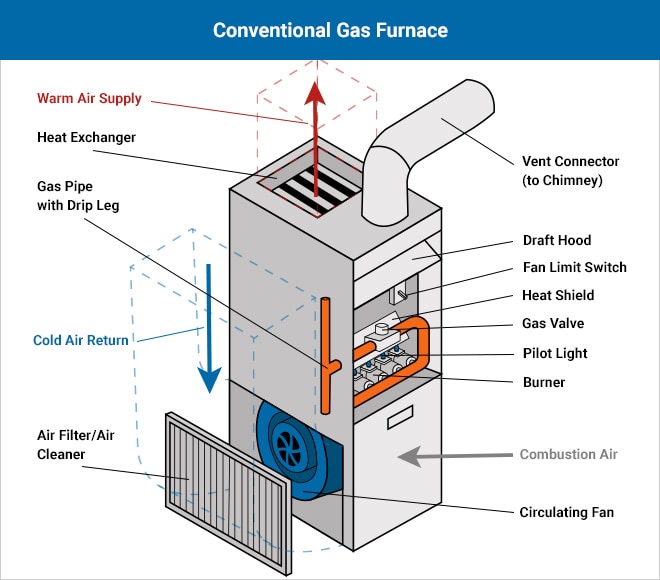
In addition to enhanced comfort, proper sizing also maximizes energy efficiency. Running a properly sized furnace avoids unnecessary energy consumption, as it operates efficiently and effectively matches the heating requirements of your home. This translates into lower energy bills and a reduced carbon footprint.
Another advantage of proper gas furnace sizing is improved durability. A furnace that is neither too small nor too large will experience less wear and tear, leading to a longer lifespan. It will also require fewer repairs, saving you both time and money in the long run.
In conclusion, when comparing gas furnace features, sizing should be a top priority. By ensuring proper sizing, you can experience optimal comfort, energy efficiency, and system durability. Consulting with an HVAC professional can help you make a well-informed decision and select the gas furnace that best fits your needs.
Understanding Heat Exchangers in Gas Furnaces
When navigating the world of gas furnaces, one important component to understand is the heat exchanger. The heat exchanger plays a crucial role in the efficiency and performance of a gas furnace, making it essential to comprehend its function and design.
In a gas furnace, the heat exchanger is responsible for transferring heat from the burning gas to the air that circulates throughout your home. As natural gas or propane burns in the furnace’s combustion chamber, the heat exchanger absorbs the heat from the combustion process and transfers it to the surrounding air.
The design of the heat exchanger can vary between different gas furnace models, but the most common type is the tubular heat exchanger. Tubular heat exchangers consist of a series of metal tubes that are bent or coiled to maximize surface area. This design allows for efficient heat transfer and ensures that the air passing through the heat exchanger absorbs as much heat as possible.
The heat exchanger must be made from a durable and heat-resistant material, as it is exposed to high temperatures during the combustion process. Common materials used for heat exchangers include stainless steel and aluminized steel. These materials can withstand the intense heat and provide long-lasting performance.
Understanding the heat exchanger in your gas furnace is vital for several reasons. Firstly, a properly functioning heat exchanger ensures efficient heating and lower energy consumption, saving you money on your utility bills. Secondly, a damaged or cracked heat exchanger can lead to the leakage of carbon monoxide, a toxic gas that poses a serious health risk. Regular maintenance and inspections of the heat exchanger are crucial to ensure safe and efficient operation.
In conclusion, comprehending the role and design of the heat exchanger in gas furnaces is essential when navigating the various features and options available. The heat exchanger is a critical component that facilitates the transfer of heat from the gas combustion process to the air circulating throughout your home. Understanding its function and importance will help you make informed decisions when selecting and maintaining a gas furnace for your home.
The Role of Thermostats in Gas Furnace Performance
When it comes to navigating the features of a gas furnace, one component that plays a crucial role in its performance is the thermostat. In this comprehensive comparison guide, we cannot overlook the important role that thermostats play in ensuring optimal functionality and energy efficiency in gas furnaces.
Thermostats are devices that control and regulate the temperature settings in a gas furnace. They allow users to set the desired temperature and maintain it by signaling the furnace to turn on or off accordingly. With advanced thermostat features now available on the market, homeowners have more control over their furnace’s performance than ever before.
One key feature to consider when comparing thermostats is the ability to program and schedule temperature changes. Programmable thermostats allow users to set different temperature settings for different times of the day, depending on their preferences and daily routines. This feature not only provides convenience but also helps save energy and reduce utility bills by automatically adjusting the temperature when no one is home.
Another important feature to look for in a thermostat is the ability to connect to Wi-Fi. Wi-Fi-enabled thermostats offer remote control capabilities, allowing homeowners to adjust the temperature settings from anywhere using a smartphone app or a web browser. This feature provides flexibility and convenience, especially for those who travel frequently or have irregular schedules.
Furthermore, some thermostats come equipped with sensors that can detect when someone is in a room and adjust the temperature accordingly. This feature, known as occupancy sensing or presence detection, helps optimize energy usage by only heating occupied areas. By avoiding unnecessary heating, homeowners can further reduce their energy consumption and lower their carbon footprint.
In conclusion, thermostats play a crucial role in the performance of gas furnaces. By navigating the various features and comparing different options, homeowners can choose a thermostat that suits their needs and preferences while ensuring optimal functionality and energy efficiency for their gas furnace.
Evaluating the Warranty Options for Gas Furnaces
When comparing the comprehensive features of different gas furnaces, one important factor to consider is the warranty options offered by each manufacturer. A warranty provides peace of mind, ensuring that you are protected in case any issues arise with your furnace.
There are several key aspects to evaluate when it comes to warranty options. These include the length of coverage, what is specifically covered, and any exclusions that may apply.
The length of coverage is an important consideration, as it determines how long the manufacturer will provide support for your gas furnace. Typically, warranties can range from 5 to 20 years. The longer the coverage, the more confident you can be in the durability and reliability of the furnace.
It is also crucial to understand what is specifically covered under the warranty. This may include parts, labor, or both. Parts coverage ensures that any faulty components will be replaced by the manufacturer at no additional cost to you. Labor coverage, on the other hand, covers the cost of professional installation or repairs. Ideally, a warranty should include both parts and labor coverage for maximum protection.
Additionally, you should be aware of any exclusions that may apply to the warranty. Some warranties may not cover certain types of damage, such as damage caused by improper installation or neglect. It is essential to read the fine print and understand the terms and conditions of the warranty to avoid any surprises down the line.
| Length of coverage | 5 to 20 years |
| What is covered | Parts, labor, or both |
| Exclusions | Potential limitations on coverage |
By carefully evaluating the warranty options for gas furnaces, you can make an informed decision and choose a product that offers the best protection and value for your investment.
Exploring Energy-Saving Features in Gas Furnaces
Gas furnaces offer a variety of features that can help homeowners save energy and reduce their utility bills. Understanding and navigating these features is essential when choosing the right furnace for your home. In this guide, we will compare different energy-saving features in gas furnaces to help you make an informed decision.
One of the key features to consider is the furnace’s energy efficiency rating, indicated by the Annual Fuel Utilization Efficiency (AFUE) percentage. The higher the AFUE percentage, the more efficient the furnace is at converting fuel into heat. Look for furnaces with AFUE ratings of 90% or higher to ensure optimal energy savings.
Another energy-saving feature to consider is variable-speed blowers. These blowers adjust the speed at which the air is circulated throughout your home, providing more even heating while using less energy. They can also adjust their speed based on the specific heating requirements, further maximizing efficiency.
Additionally, look for a gas furnace with a modulating gas valve. This valve adjusts the amount of gas being burned based on the heating needs of your home, providing more precise temperature control and reducing energy waste. Furnaces with modulating gas valves can operate at different levels of heat output, depending on the outdoor temperature and indoor conditions.
Some gas furnaces also come equipped with smart thermostats, which allow you to control and program your furnace remotely. These thermostats can optimize energy usage by adjusting the temperature settings according to your schedule and occupancy patterns. They can also provide detailed energy usage reports, helping you identify opportunities for additional savings.
When comparing gas furnaces, don’t forget to consider the quality of the furnace’s insulation. Proper insulation reduces heat loss and improves efficiency. Look for furnaces with high-quality insulation materials and consider the thickness of the insulation as well.
In conclusion, exploring and understanding the energy-saving features in gas furnaces is crucial for homeowners who want to maximize efficiency and minimize energy waste. By considering features such as AFUE ratings, variable-speed blowers, modulating gas valves, smart thermostats, and insulation quality, you can choose a gas furnace that will provide optimal comfort while keeping your energy bills in check.
Q&A:
What are the different types of gas furnace features?
The different types of gas furnace features include variable speed blowers, multi-stage burners, smart thermostats, and high-efficiency ratings.
How do variable speed blowers improve the performance of a gas furnace?
Variable speed blowers in gas furnaces improve performance by adjusting the airflow to match the heating needs of the home, providing consistent and efficient heating.
What are the benefits of having a multi-stage burner in a gas furnace?
A gas furnace with a multi-stage burner can operate at different levels of heating output, allowing for better temperature control, increased energy efficiency, and improved comfort.
What are some features to consider when choosing a gas furnace?
When choosing a gas furnace, it’s important to consider features such as fuel type compatibility, energy efficiency ratings, noise level, warranty, and the availability of smart thermostat integration.
What are the advantages of smart thermostats in gas furnaces?
Smart thermostats in gas furnaces offer advantages such as remote control and scheduling capabilities, energy savings through intelligent temperature adjustments, and compatibility with home automation systems.

